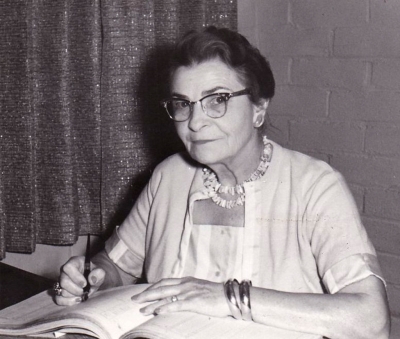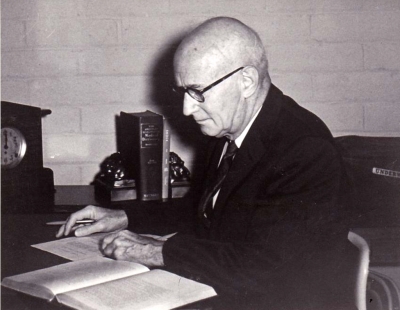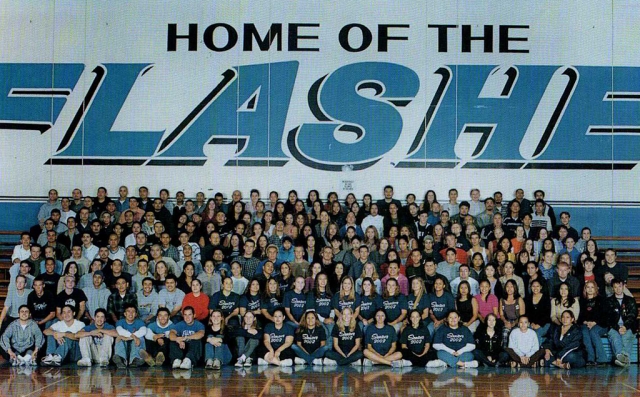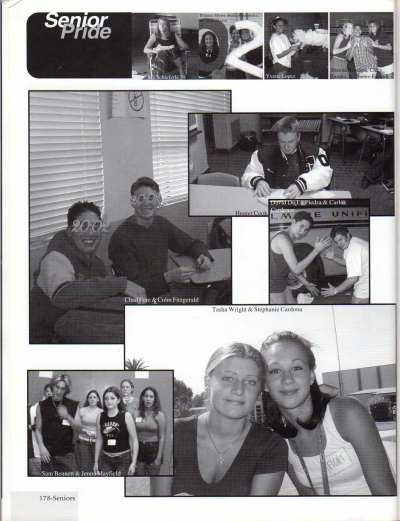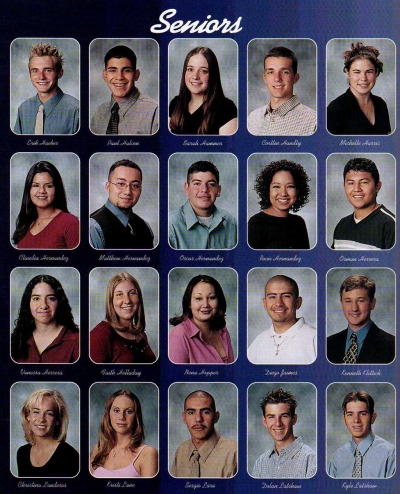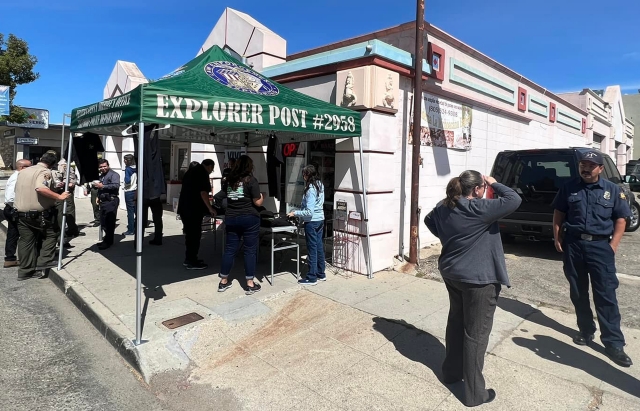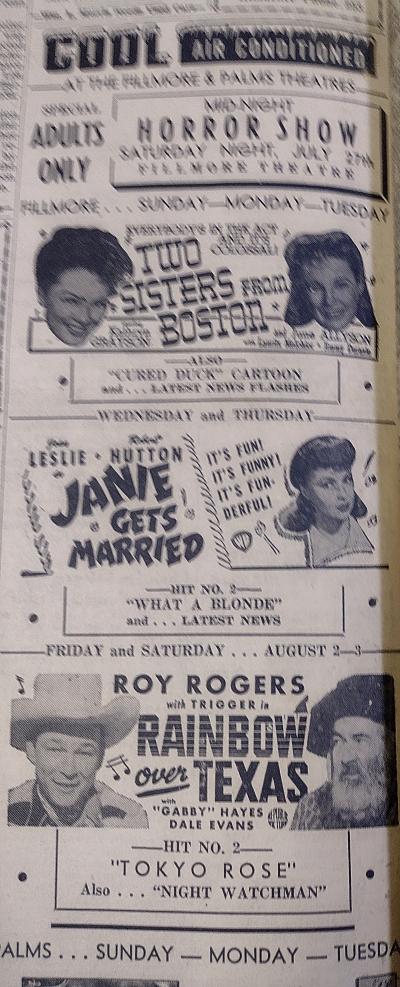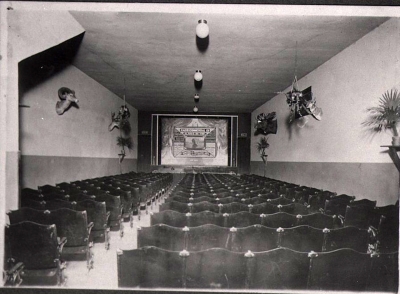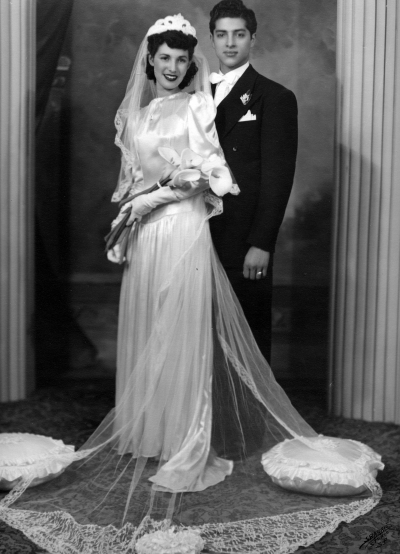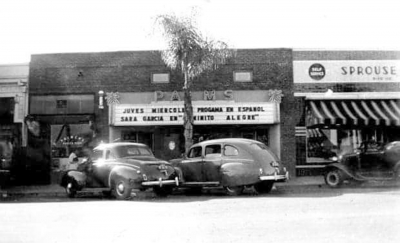|
By Gazette Staff Writers — Thursday, May 19th, 2022
Courtesy Fillmore Historical Museum During the 1950s and 1960s many families in Fillmore would keep a small green jar with an orange label in their medicine cabinets. The jar contained Hydrosulphosol ointment. Not only was it very effective for treating minor burns – it was also a hometown product manufactured by the E. C. Lientz Company in North Fillmore. So, what was hydrosulphosol? It was developed by Earl Hill Wilson in the 1930s. In 1935 a piece of steel penetrated the eye of Betty Lientz, then age 12. The steel was removed with a magnet, but the eye did not heal but continued to hemorrhage. Betty’s parents, Elizabeth and Oliver Lientz, were told the best treatment would be to remove the eye. Oliver Lientz was reluctant to do this since he had his right eye removed in 1926 due to complications from a childhood injury, so he looked for alternative treatments. In 1936, just two weeks before Betty was due for the surgery to remove her eye, the Mr. and Mrs. Lientz met with Earl Hill Wilson. His formula was given to a professor of chemistry at Occidental College to test. Based on the test results it was decided it was safe for Betty to take hydrosulphosol internally. Both Betty and her father began in April 1936 to take the medicine. When Betty was examined by the ophthalmologist prior to the planned surgery, no new hemorrhaging was found for the first time in nine months. The surgery was cancelled, and Betty kept her eye. During World War II hydrosulphosol was used successfully to treat burns on the battlefield and also for burns suffered by welders. The Lientzes formed a company called E. C. Lientz & Co to manufacture and market Hydrosulphosol. E. C. being the initials of Elizabeth Lientz. In 1946 a manufacturing plant was built in North Fillmore. Oliver Lientz concentrated on the medical/scientific aspects, Elizabeth concentrated upon the financial/accounting aspects, and Betty was involved with the manufacturing and packaging of Hydrosulphosol. Numerous articles were written in the 1940s and 1950s on the effectiveness of the ointment for burns. Articles appeared in the Los Angeles Times and Time magazine. Art Linkletter, a popular TV personality of the day, had several shows spot lighting the success of the ointment. In a 1988 letter by Betty Lientz to Dorothy Haase, “The publicity happened during a time when it was totally unacceptable to presume to tread upon the sanctity of the medical profession. In other words, the deep core of medical politics viewed this publicity as advertising, as if a small company could influence so many news agencies to publish or broadcast medical news for the purpose of promoting the sale of a specific product.” By the early 1960s, the product had attracted the attention of regulatory bodies. One suit was brought which alleged, “The defendants conducted the interstate distribution of the article as a mail order business and promoted the business through the use of newspaper and magazine articles and radio and television programs the defendants sold the article direct to laymen for purposes of self-medication and also promoted sales to doctors, drug wholesalers, and retailers…” According to the complaint, “labeling of the article contained false and misleading representations that the article was adequate and effective for the treatment mitigation prevention and cure of corneal scars, opacities, corneal dystrophy, corneal ulcers, cataracts, glaucoma, diabetic retinopathy, iritis, …. and other diseases and conditions of the eye that cause impaired vision.” In 1962, the company agreed to stop shipping hydrosulphosol to the general public for internal use, but it could be prescribed by physicians for such use and still could be used as a topical ointment. The company continued in business until 1971 but by that time the founders were ready to retire. Although there was hope that a pharmaceutical manufacturing company would purchase the business, none stepped forward and the enterprise was closed. Elizabeth Lientz died in 1975, and Oliver passed away in Fillmore in 1985. The Hydrosulphosol building still stands in North Fillmore and is a private home. |
|
By Mark Ortega — Thursday, May 19th, 2022
The Great Class of 2002 will be celebrating their 20-year class reunion at the annual alumni dinner event in downtown Fillmore, on Saturday June 11th. Awarding winning caterer, DJ's California Catering, will be serving up a delicious meal starting at 6:00pm. This year, 2 DJ's and live band (Juano and Friends) will highlight the evening, along with DJ Manuel Nunez Jr. Happy hour starts at 3:00pm. Lots of surprises in store for this year's alumni dinner. Don't miss out. All Alumni are invited. Make your reservations soon before it's too late. Go to fillmorehighalumni.com and click on Events! www.fillmorehighalumni.com/events. Go Flashes! |
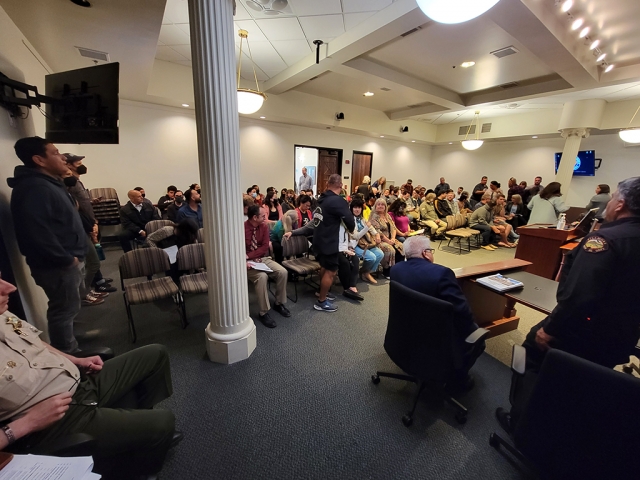 It was standing room only for Tuesday’s City Council meeting with the “LGBTQ+ Pride Resource Fair” under discussion. Enlarge Photo By Gazette Staff Writers — Wednesday, May 11th, 2022
Items: New Business: |
|
By Gazette Staff Writers — Wednesday, May 11th, 2022
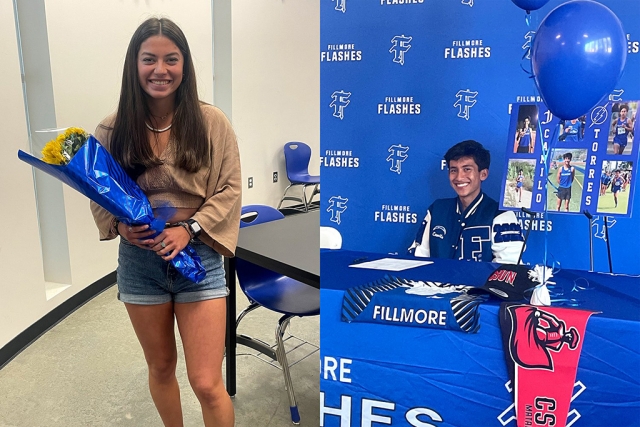 Last week, Fillmore High selected their Athletes of Year, Yazmeen Gonzalez, Girls Volleyball, Girls Water Polo and Swimming, and Michael Camilo Torres, Cross Country and Track & Field. Photos courtesy Fillmore High blog. Enlarge Photo |
|
By Gazette Staff Writers — Wednesday, May 11th, 2022
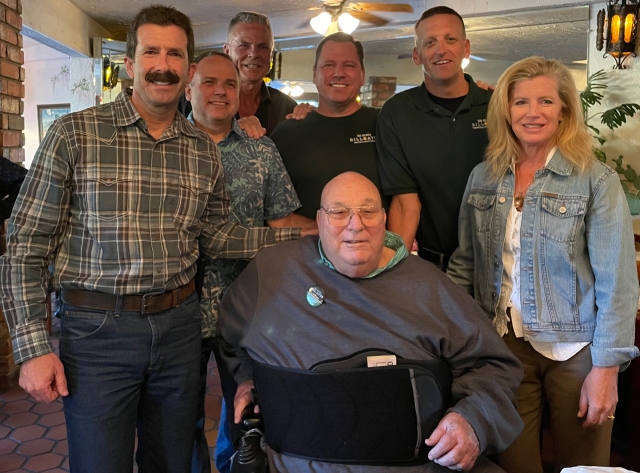 A special event was held in support of Sheriff Ayub’s reelection as Ventura County Sheriff on May 9th at La Cabana Restaurant in Santa Paula. The event was heavily attended with supporters, friends, and family. A special appearance was made by Ventura County Sheriff Larry Carpenter (retired). Pictured (l-r) are Sheriff Bob Ayub, Assistant Sheriff Eric Dowd, Kelly Johnson, Assistant Sheriff Rob Davidson, Commander Eric Tennessen, and Undersheriff Monica McGrath. Front, Ventura County Sheriff Larry Carpenter (retired). Photo credit Carina Monica Montoya. Enlarge Photo |
|
By Gazette Staff Writers — Wednesday, May 11th, 2022
 On Tuesday, May 10th, from 10am to noon, Fillmore City Fire Department, Fillmore Police Department, City of Fillmore, National Alliance on Mental Illness (NAMI) Ventura County, and La Michoacana bakery in Fillmore partnered in the Coffee with the Badges event. The day’s festivities were in support of the City’s efforts to raise awareness about the importance of mental wellness and to raise funds for the NAMIWalks Your Way 2022 campaign. This event raises funds for NAMI’s free programs at a time when the community needs them the most. You can support Fillmore public safety’s fundraising efforts by visiting the following website and making a donation: www.namiwalks.org. Photos Courtesy https://www.facebook.com/SupervisorKellyLong Enlarge Photo |
|
By Gazette Staff Writers — Wednesday, May 11th, 2022
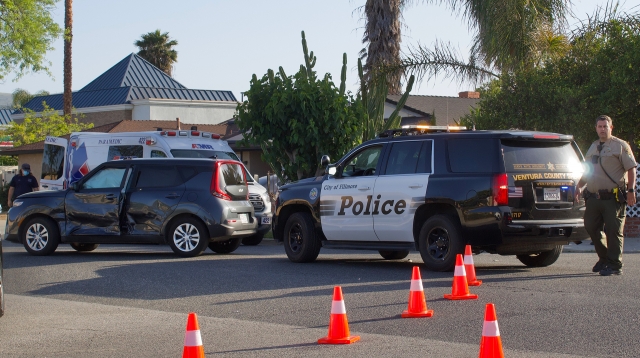 On May 6th, 2022, the Fillmore Sheriff’s Department, Fillmore Fire and AMR Paramedics were dispatched to a traffic collision in the area of Santa Clara and B Street. Arriving fire crews reported two vehicles with one patient being transported to an area hospital, condition unknown. Cause of the crash is under investigation. Photo credit Angel Esquivel—AE News. Enlarge Photo |
|
By Gazette Staff Writers — Wednesday, May 11th, 2022
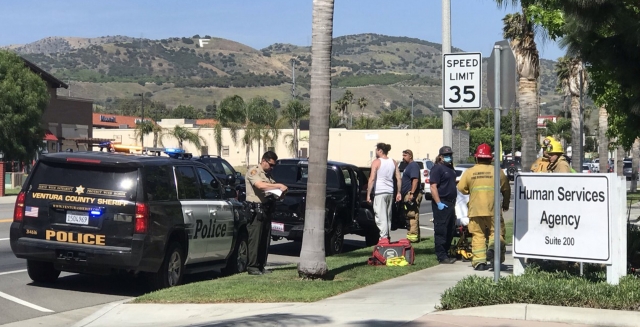 On May 7th, 2022, at 3:34pm, the Ventura County Sheriff ’s Department, Fillmore Fire and AMR Paramedics were dispatched to a traffic collision at B Street and Ventura/SR 126. Arriving fire crews reported two vehicle’s involved, a semi-truck and a black Toyota Tact truck. One patient was transported to the hospital by ambulance, condition unknown. Cause of the crash is under investigation. Photo credit Angel Esquivel—AE News. Enlarge Photo |
 On Friday, April 22nd, 2022, Sierra Northern Railway, Ventura Division, operated a second train, with seven streamline passenger cars between Fillmore and Santa Paula. Photo courtesy Sierra Northern Railway. Enlarge Photo By Gazette Staff Writers — Wednesday, May 11th, 2022
By David Lustig Following on the heels of a successful freight photo train April 22, Sierra Northern Railway, Ventura Division operated a second train, this time with seven streamlined passenger cars between Fillmore and Santa Paula. The train was stopped numerous times for their company photographer to record the trip. Besides photography, the train was important for the onboard crew to continue to familiarize themselves with train handling on the many newly refurbished sections of the right-of-way. Sierra Northern Railway leases the line, which is owned by the Ventura County Transportation Commission. The railroad is planning to bring additional rolling stock onto the property to accommodate new freight customers and eventually excursion passenger trains, as well as supplying equipment for movie, television, and commercial productions. The Sierra Northern Railway was formed in August 2003 through the merger of two Northern California short line railroads: the Sierra Railroad Company and the Yolo Short Line Railroad. They currently operate about 100 miles of track in Northern California, and 30 miles of track in the Santa Clara River Valley in Southern California. |
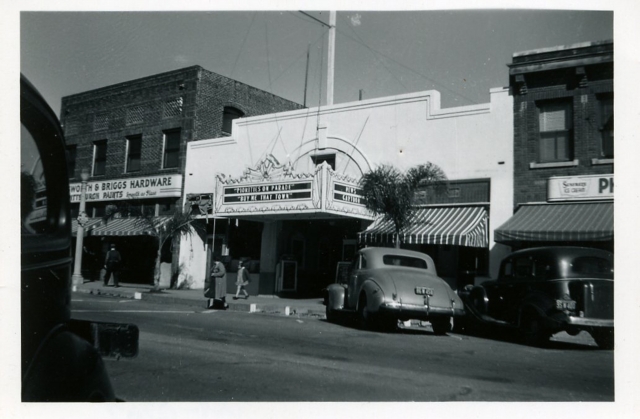 The Fillmore Towne Theatre circa 1942 on Central Avenue. Photos Courtesy Fillmore Historical Museum. Enlarge Photo By Gazette Staff Writers — Wednesday, May 11th, 2022
Courtesy Fillmore Historical Museum Going to the movies at the Towne Theatre on the east side of Central Ave. was a rare treat for young Esperanza Carrera. She could only to go the theatre in Fillmore every other week or so. She wasn’t allowed to go alone so she took her little sister as well. On one occasion she couldn’t see very well from the first place she sat, so she decided to change seats for a better view. A rope blocking the entrance to some empty seats had been pulled back. She and her sister settled in to these new seats to enjoy the show. Not long after a man with a flashlight came along and threw her out of the theatre. In those days the theatre in Fillmore was segregated and she wasn’t allowed to sit where she wanted. In her 1992 interview with Dorothy Haase, Esperanza told how scared and embarrassed she was at being treated that way. She said, “We had our way, sitting by the wall…. and upstairs over there in the balcony. They didn't let anybody on the other side of the wall.” (In those days the balcony was divided with two low walls separating the seating areas with a space between the walls for the projection of the film. Mexicans sat on the north side with Anglos on the south side.) Others interviewed on the subject by Museum volunteers told of being required to sit up front in the first few rows, or along the sides, and at other times they were assigned to the balcony. The seating seems to have changed with the changes in management, but segregation continued. At the time the Palm Theatre at 359 Central, the other theatre in town, showed Spanish language movies a few days a week. The Palm’s ad in the May 3, 1946, shows “Mexico Del Mis Recuerdos” and “Calaveras Del Toro” playing on Thursday and Friday. Another time when Esperanza was on a date with her future husband, a popular movie was playing and the Towne Theatre was full. There were still a few seats on the other side of the theatre. “So, then I went over there, and I told the manager that that place was full ...” So, he said, ‘Well, you have to wait until the second part of the show.’ I said, ‘No, I can't. My mother's going to get mad....’ Well, as it is that sometimes we used to go home at 11 o'clock. And I said then that means maybe I have to get home at maybe 12 or 12:30. I said, “We can't do it mister.” Sandy Gunderson shared the following: “This is my one of my all-time favorite stories that I've told many, many times. When my dad was in his 70s, or 80s, or young 80s, we had a birthday party and Joe Galvan came. I ended up sitting right by him on a couch and he's a storyteller. It was a post-World War II story of a young man who served his country who served in Europe, a man of Hispanic descent, Mexican descent, born here and an American citizen, and who was now coming back to Fillmore in the late 40s, or maybe 1946-47………he went to the movies, and there was a segregation policy, the Mexicans up in the balcony, couldn't sit below. But, this young man whose name, I don't remember, walked in. After having served his country, putting his life on the line, and sat on the bottom. He felt like a full citizen, didn't think he needed to sit upstairs anymore. And the people in charge weren't having it. The usher eventually told the manager, the manager said, you need to leave if you don't go sit up there. And this young man was not going to sit in the balcony. ‘No, this is my country; I could sit where I want.’ So, they managed to walk this young man out. And then the young man turned and said, ‘You know, I want my money back. If I'm not going to get to see the movie, I want my quarter.’ The manager by this time was up to here and beyond with this so…. The way Joe told it, he just opened the cashier drawer and pulled out a quarter and jammed it into this young man's hand. And this young man had the presence of mind to look at the quarter and said, ‘This isn’t the one I gave you.’ “At some point the police were called. Esperanza must have witnessed the same event and remembers that it was Earl Hume the chief of police, constable Jack Casner, and someone named Mr. Knight who came to deal with the commotion. Manual and Connie Victoria were a well-known Fillmore couple. Manuel served in Italy during WWII, was a talented mason who built many walls around town, and ran a shoe repair shop in the Masonic Temple building. He rode bicycles, was a guide to the Sespe back country, and led hikes of the area for many locals. Connie was known for selling Avon products and being active in the community. They were a movie-star good looking couple and expert dancers. When they stepped out, they were “dressed to the nines, I mean, beautifully dressed.” In their interview, Connie tells it this way: “Anyway, we were dressed up. I think he even had his army suit, because he was very proud of his soldier outfit. Anyway, we sat in the very front row. And right away after that, I turned around and I said Manuel ‘there's a lot of loges.’ And I already had this kind of problem in Santa Paula, when he was in the service in Italy. So, I was ready for this sort of thing. And I told him I wanted to sit in the loges. And they said ‘No, there's no room. You have to sit in front.’ And right away, my face got hot. And once my face is hot, you look out. I asked, ‘Is it because we're Mexicans?’ And he said, ‘It's not my fault. It's just that I have orders that you cannot sit in the loges if you're Mexican.’ And Manuel said that you're going to hear about it. Because I had already done that in Santa Paula. When my husband was in Italy fighting, they would they not let us sit in the middle. We had to sit on the sides. I had backing because I belonged to two nice clubs, Latin clubs. And I told them about it. And they took me to the district attorney in Ventura. And he said, ‘You know, I wish there were more people like you. This wouldn't happen if people would say something. But no, they just let it.’ So, when the DA saw me again, back in Fillmore, he said, ‘not again. And he said I'll take care of it.’ And he most certainly did. Next day they came in and told us it was a big mistake.” Sandy Gunderson tells that the “blowback came back on the theatre. And the theatre manager showed up at the Victoria’s front door with passes to the theatre and it was never segregated again after that.” She continues “By the time I came, I could sit wherever I wanted. Any gum sticky floor part was good enough for everybody. There was no segregation.” The Fillmore Historical Museum invites you to send stories of your experiences at the theatre so that the history of the period can be more complete. Fillmore.museum@gmail.com |



